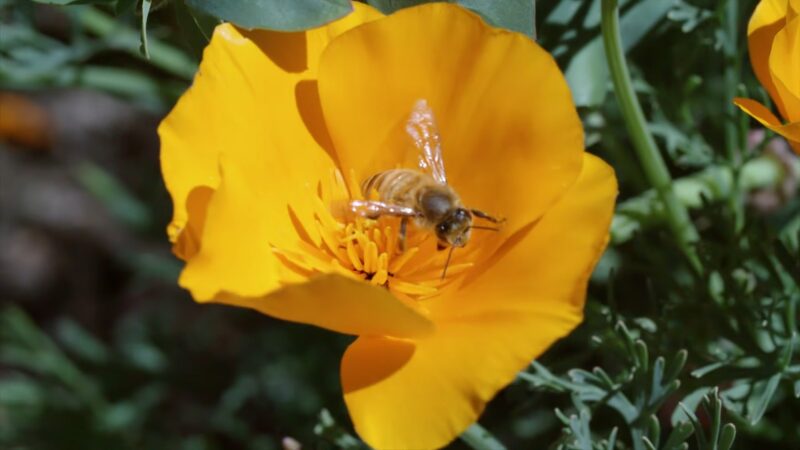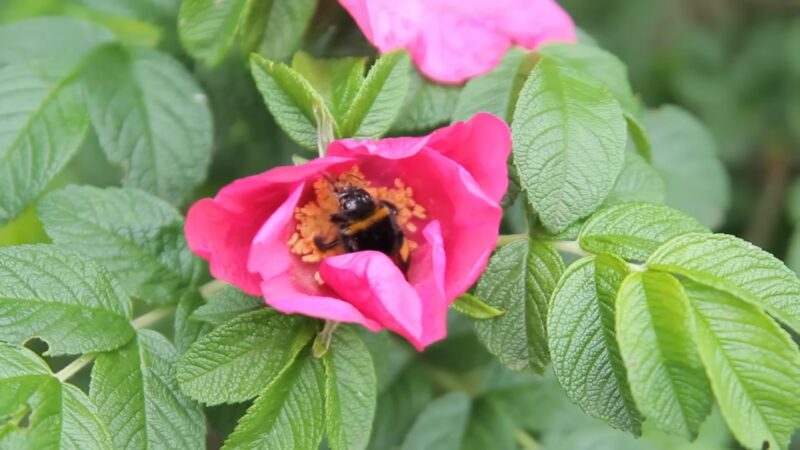As the owner of a farm dedicated to supporting pollinators, I see firsthand how vital bees, butterflies, and birds are to maintaining healthy ecosystems.
They’re indispensable in pollinating a wide array of crops and wild plants, significantly boosting our production of fruits and vegetables, and ensuring the diversity of our plant life.
I take pride in cultivating a variety of flowers that bloom throughout the entire year, offering these little helpers a reliable source of nectar and pollen.
I’ve also gone a step further by adding features like water sources and creating cozy spots such as bee hotels and brush piles around my farm.
These efforts make my farm a haven for pollinators, encouraging them to visit and stay.
Overview
Farmers dedicate parts of their land to develop areas filled with native flowers, providing essential nectar and pollen for pollinators.
Managing pesticides carefully to lessen their impact on these crucial insects is vital, choosing and using them in ways that don’t cause harm.
Planting a mix of crops that flower at various times ensures that pollinators have a steady supply of food all season long.
Providing clean, accessible water sources is also important for their hydration and nest-building, especially for bees.
Moreover, these practices aren’t just limited to farms; they often involve the wider community, helping to spread awareness and magnify the positive effects on pollinator populations.
Key Pollinators for Agriculture

Bees play a crucial role in agriculture by pollinating a variety of crops, including fruits such as apples and berries, as well as vegetables and nuts.
Their essential work involves moving pollen from one part of the flower to another, which results in fertilization and leads to the production of seeds and fruit. Organic seed production relies heavily on the intricate dance of bees, ensuring the genetic diversity and purity of crops while maintaining ecological balance.
Bees (Hymenoptera)
• 4,000+ species in North America; ~275 in Vermont
• Plant pollen = protein source for bees
• Range retractions: EU, UK, North America
• Widespread declines in diversity (and abundance?)
• Evidence of competition with non-native bees driving some declines
As Vermont.gov states:
- Honeybees (Apis mellifera): Domesticated widely and known for their honey production.
- Wild Bees: Including bumblebees and solitary bees, they often are more efficient pollinators than honeybees.
The most important providers of pollination services globally are insects, particularly bees and some flies. – Monitoring Insect Pollinators and Flower Visitation, 2019
Other Vital Pollinators

Besides bees, several other species contribute significantly.
- Butterflies
- Birds: (Hummingbirds)
- Bats
- Moths
Some Neotropical plant families rely predominantly on hummingbirds for pollination, including Bromeliaceae. However, apparently hummingbird-specialized bromeliads are known to be visited by other floral visitor groups, which may contribute to their reproduction. – Botanical Journal of the Linnean Society, Volume 188, November 2018
How To Plan a Pollinator-Friendly Farm?
I recommend to fellow farmers and landowners that they take a closer look at their property by conducting a thorough survey to spot existing plants and environments favorable to pollinators.
Keeping track of the variety of flowering plants, potential nesting areas, and available water sources can give a solid indication of the biodiversity present.
Crops That Attract Pollinators

When choosing plants for your garden, focusing on native species is key. I suggest talking with your local nursery to find out which native plants are best for your area. While this list only scratches the surface, it’s a great place to start:
For flowers, consider planting Coneflowers, Bee Balm, Butterfly Weed, Salvia, Lavender, Sunflowers, Zinnias, and Black-eyed Susans. These attract a variety of pollinators and are easy to grow.
Don’t forget about herbs. Mint, Thyme, Rosemary, Basil, Chives, and Sage not only attract pollinators but are also useful in your kitchen.
For those with more space, adding shrubs and trees like Rhododendron, Flowering Dogwood, Redbud, Azaleas, Crabapple, and Serviceberry can provide larger habitats and food sources for pollinators. Remember, this is just a starting point—there are many more options out there
Creating Habitats
Farmers can enhance pollinator populations by establishing a diversity of plant species that provide nectar and pollen throughout the growing season.
According to guidelines from the US Forest Service, it’s beneficial to:
- Plant in Clusters: Grouping similar plants together makes them more attractive and easier to locate for pollinators.
- Use Native Species: Native plants are well-suited to local pollinators and often require less maintenance.
- Be Cautious with Pesticides: Pesticides can harm pollinators, so it’s best to minimize their use or opt for organic options
- Water Features: A birdbath, a shallow dish, or even a small pond can quench pollinators’ thirst.
Integrated Pest Management Strategies
Integrated Pest Management (IPM) is a sustainable approach to managing pests by combining biological, cultural, physical, and chemical tools in a way that minimizes economic, health, and environmental risks.
The University of Minnesota says:
- Chemical Caution: Avoiding pesticides harmful to pollinators, especially neonicotinoids, unless absolutely necessary.
- Biological Controls: Introducing or encouraging natural pollinator predators and competitors can help to keep pest populations in check.
Maintaining Their Health
To reduce the negative impact of pesticides on pollinators, farmers should follow integrated pest management (IPM) practices that prioritize the use of non-chemical methods for controlling pests.
When chemical pesticides are necessary, choosing pollinator-safe options and applying them during times when pollinators are least active can mitigate harm.
The selection of pesticides should be informed by their toxicity to bees, and buffer zones can be established to protect the habitat from spray drift.
Crop losses to pests are a major problem in sustaining production, and often, pesticides are used as the first line of defense against pests. However, the indiscriminate use of pesticides often impacts negatively on beneficial insects – insects that provide essential ecosystem services such as natural pest control and pollination.
While pesticide risk assessment procedures for honey bees have been well elaborated as part of pesticide evaluations, existing registration procedures are based only on the European honey bee – and not generally field-tested in developing countries. – Food and Agriculture Organization of the United Nations.
Disease Prevention in Bee Populations

Regular monitoring of hives for signs of illness and pests, such as the Varroa mite, helps early detection and prompt intervention. Implementing best practices for hive management, including the use of resistant bee strains and maintaining sanitary conditions, is vital.
“Lose of these key pollinators, either bred or wild would be biological, agricultural, environmental and economic disaster.” – WOAH, November 2014
Bottom Line
I pride myself on cultivating a diverse array of year-round blooming flowers and creating a welcoming environment with water features and shelter-like bee hotels.
I understand the importance of using native plants, managing pesticides wisely, and ensuring a continuous food supply through varied plantings.
My efforts extend beyond my farm, as I aim to involve the community and raise awareness about the importance of pollinators, and if you are also into this business, so should you!
Harley Wilson, from Vermont, carries on a family legacy of organic farming, with a focus on supporting pollinators. Inherited his farm from his grandfather, his dedication to the land Harley also teaches his children the value of hard work through hard work.

